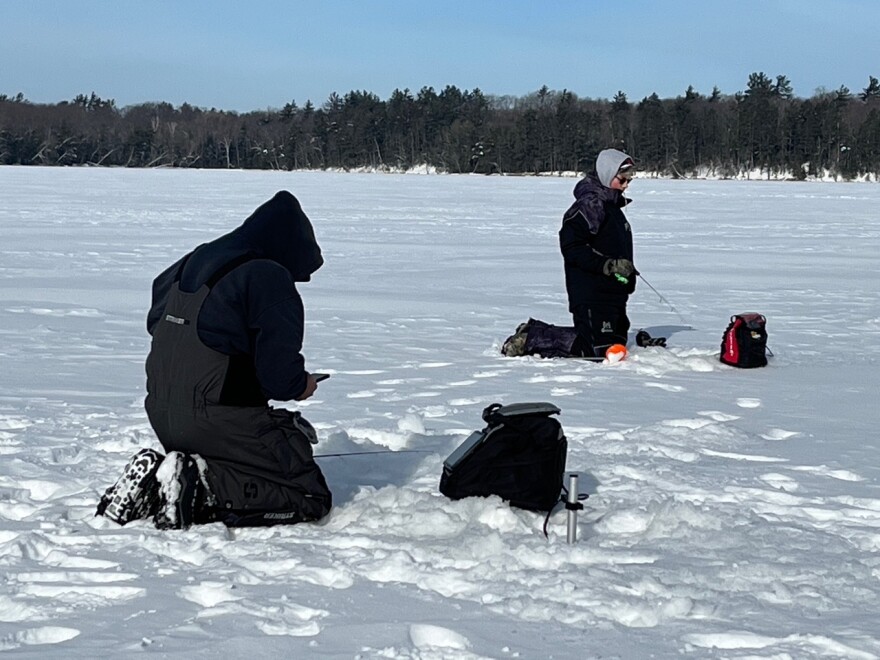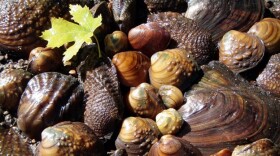Last weekend I was sitting on a five-gallon bucket staring down a dark hole. That’s right, it’s ice fishing season! To my left was my brother-in-law using Garmin LiveScope technology. The sonar technology showed fish right next to his bait in real time. To my right was my son using a Vexilar system. You could see fish move toward his bait as he moved his line up and down. My fishing hole was noticeably lacking in technology. Just a hole in the ice and an ice skimmer from the 1950s. I had no idea if there were fish by my bait. In the end, it didn’t matter. None of us caught any fish because they were just not biting. When you are sitting on a five-gallon bucket ice fishing, you have a lot of time to think. I was wondering how fish activity changes with changes in water temperature. Most people can imagine fighting a large northern in the summer. They will put up quite a fight on the end of your line. That same fish would seem docile by comparison when caught on a few months later ice fishing. Why is this?
Certainly, water temperature plays a role. As a general rule, fish activity increases with temperature. In the summer, lake water surface temperatures can reach into the 70s or more. This is certainly not the case in the winter. The water temperature just under the ice is 32°. That is a 40 degree decrease in temperature from summer to winter. Fish continue to feed in the winter, but less actively.
It’s obvious that water temperatures in lakes are not uniform from summer to winter, but it is also not uniform from top to bottom. During summer stratification, lakes more than 20 feet deep usually stratify into three distinct layers. The top epilimnion layer stays warm at around 65° to 75° degrees, the middle metalimnion layer is the transition layer between the warm top and cold bottom, and the bottom hypolimnion layer is the coldest, ranging from 39°to 45°. Fish activity will certainly differ depending upon what layer they are positioned. Fish are cold-blooded animals. Cold-blooded means the animal's body temperature is basically the same as its surroundings. A fish swimming in 50° water will have a body temperature very near 50°. Fish can regulate their body temperature only by swimming into different surroundings such as swimming to a different water depth or swimming into the shade of a pier or other water structure.
Winter stratification has more uniform water temperatures with 32° right below the ice to 39° at the bottom of the lake. These temperatures remain stable because ice cover prevents wind from mixing the water.
In cold water, enzymes that digest the food a fish eats are very slow acting. Therefore, it takes quite a while for a fish’s meal to be completely utilized and the fish are inactive. As the water warms in the summer, these enzymes become more active, and fish eat more often.
Temperature is not the only factor influencing fish activity. Oxygen level is another major factor. Fish breathe dissolved oxygen in the water. Water plants and phytoplankton increase oxygen levels in lakes through photosynthesis but are depth dependent. Sunlight has limits on how far it will penetrate the water, limiting the depth at which photosynthesis can occur. In addition, air pressure forces oxygen into the water. Wave action in a lake or current in a stream exposes more water surface area and raises the oxygen content. Cold water can hold more oxygen than warm water. Hot summer temperatures can raise water temperatures, so it won’t hold enough oxygen to maintain fish life. This is where the balance comes in. Fish are more active in warm water, but it can’t be too warm to be void of oxygen.
You may be familiar with the term thermocline, which is the same as the metalimnion or middle layer mentioned above. The top layer of water may be 15 feet deep down to the thermocline. High oxygen content exists just above where the cold and warm water meet. The thermocline will be the same depth across the entire lake. In the summer, try and find areas where the thermocline meets weeds, rocks bars, structure, or cover, fish will favor these high oxygen areas and just might be convinced to bite.
Understanding how water temperature and oxygen levels change can help you locate fish. Making them bite is another story. That is why it’s called fishing and not catching.
For Field Notes, this is Scott Bowe from the University of Wisconsin-Madison’s Kemp Natural Resources Station.









